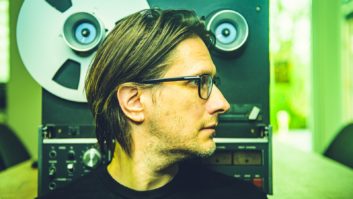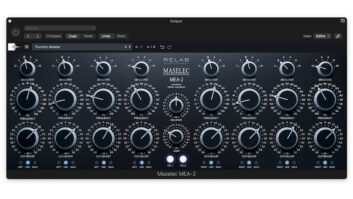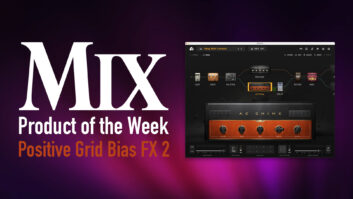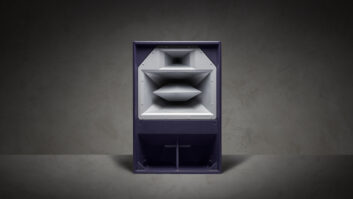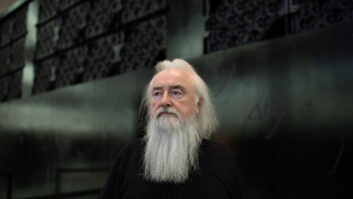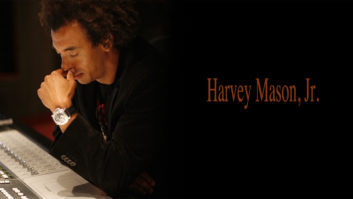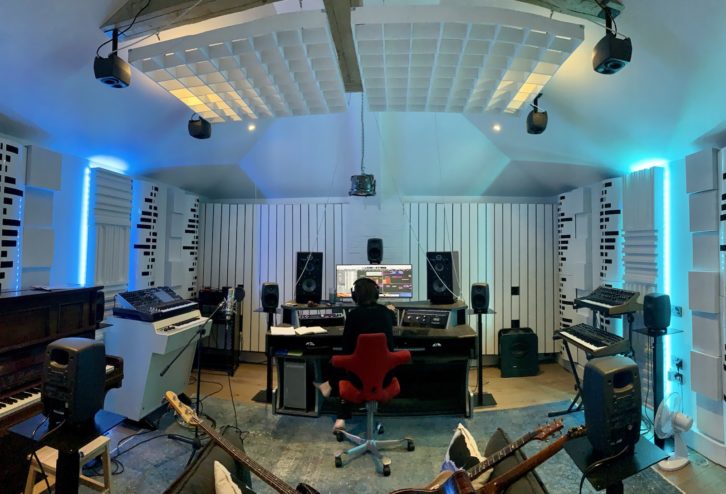
 This was Mix’s 11th most-read article of 2022!
This was Mix’s 11th most-read article of 2022!
Artist/engineer Steven Wilson has become the go-to pro for remixing classic rock in Dolby Atmos and Spatial Audio. Discover the first part of this profile in Part 1.
ATMOS, SPATIAL, IMMERSIVE
The introduction of Spatial Audio on the Apple Music streaming platform in the summer of 2021 reignited interest in the Dolby Atmos Music format. Yet, Wilson says, challenges remain, both in terms of familiarity with the format and with the way that Dolby Atmos streaming mixes are being experienced.
“Most artists at the moment don’t really understand what Atmos is,” he says. “I’m still discovering stuff, even now. But they say, ‘Oh, we’ve got to get an Atmos mix done.’ All the major labels are getting onboard, and I don’t think a lot of them really understand what it is. They’ve just been told, ‘You’ve got to have everything mixed in Atmos now.’”
One of the biggest challenges, Wilson has discovered, is that very few of the stakeholders can listen to Dolby Atmos in an environment comparable to the one in which it was created in order to approve the mix. “People are getting Atmos mixes done but they don’t really understand what they’re going to hear. And they have no real way of listening to it.”
Happily, he says, those immersive mixes can be rendered in binaural. “I’m sending these mixes off and at least the artists, the labels and management are able to listen,” he explains. “So for a lot of people, Atmos is not going to be discrete audio, but a spatialized version of listening in stereo.”
Apple was a little opaque during its Spatial Audio rollout, not making it clear that listeners need to toggle certain controls to hear Atmos mixes at their best. Case in point: Wilson remixed a major new wave band’s debut album into Atmos then sent the binaural renders to their big-name producer for approval. “The first time he got the files, he didn’t have the right setting on his iPhone. He must have thought, this guy’s a comedian. That’s the worst thing, because if you don’t have Spatial Audio engaged, it sounds all wrong. It sounds like the guy who mixed your tracks doesn’t know what he’s doing. I felt so bad.
“I was sending him MP4s, and he was listening to them in Spatial Audio,” he continues. “He said, ‘Why can’t I hear stuff coming from above?’ I said, ‘Because you’re listening on headphones; it’s just not physically possible.’ I think he’d been led to believe that it was. Once we got through that and he had a more realistic expectation, he loved it.”
That, too, is a little depressing, Wilson says, “because you have all this amazing stuff— sequences flying between the left and right, front and back, above your head—and you don’t hear that in Spatial Audio. You have to temper your ambitions slightly when you’re doing these Atmos mixes to understand that most people are never going to hear it in discrete surround.”
KEEPING THE MUSIC IN MIND
Wilson’s surround and immersive mixes have been lauded for their musicality, and there’s an obvious reason for that. “I’m a musician,” he says matter-of-factly, “so maybe that’s the difference between how a musician or an engineer, producer or mixing engineer would approach it. I’m thinking in terms of the music. This has been the story of my career. When I started doing 5.1, I never really listened to what anyone else had done; I just did what sounded cool to me.
“On the Gentle Giant song ‘Reflection,’ there’s a four-part vocal counterpoint,” he continues. “The obvious thing to do is put one voice in each corner, which I did in the 5.1 and the Atmos, too. But then there’s a bit where they sing, ‘All around, all around.’ That’s a no-brainer; let’s have them all spinning around the room. You could say it’s a gimmick, but the music is also suggesting that. I’m still thinking about the music, the intentions that the artists had.”
Gentle Giant is probably the epitome of that type of music. Yet hardcore prog fans might be surprised by some of the other bands Wilson has been mixing into Dolby Atmos lately, most of which he is not allowed to name. But he can say that he’s mixed Tears For Fears, Roxy Music and Ultravox into 5.1 in the past, and KISS’s Destroyer album, which he mixed in Atmos for a 45th anniversary package released in November 2021, is about as rock ‘n’ roll as it gets. “You don’t want to take the glue away from what is essentially a rock ‘n’ roll group. There’s a lot more keeping the guitar, bass and drums tethered,” he says of KISS.
“They’re all playing the same riff. There’s less vertical complexity, in the sense that there aren’t all these things going on simultaneously. But that album was produced by Bob Ezrin, so it’s got choirs, orchestras, backing vocals, sound design, sound effects. There were lots of opportunities to open up the surround field. I did put some of the guitars in the rears; if it sounds good to me, I go with it. It’s probably not as dazzling a surround mix as, say, Gentle Giant might be, but it still sounds terrific in immersive audio.”
LOOKING TO THE FUTURE

Where things will get interesting, of course, is when more artists work on a project in Dolby Atmos from start to finish. In 2022, Wilson says, he will focus on a new Porcupine Tree release, Closure/Continuation, much of which was written, and partly recorded, 10 years ago and which he will mix in Atmos. “But I’m very much thinking in terms of Atmos for my next solo record, which I’m working on now and which won’t come out until 2023,” he says.
People will likely take different approaches depending on whether they are capturing acoustic sources or recording discrete, direct sources. Working in stereo, Wilson says, you might record something twice and place the tracks left and right. In surround, you could track it four times and place one in each corner. “Now you’re in Atmos, let’s track it eight times!” he says. “Imagine what fun Phil Spector might have had.
“If you have a drum kit, stick up six different pairs of room mics and get reflections from every corner of the room. When you do the Atmos mix, position the recordings accordingly. People are going to start thinking about how to mike up things in spaces. Imagine if Miles Davis was recording Kind of Blue today. Stick a load more mics up and there’s your Atmos mix.”
Ultimately, Wilson believes, things could get more interesting at the other end of the musical spectrum. “I suspect, like a lot of innovation in music these days, the real progressive thinkers will come from the world of electronic music and some of the hip-hop crowd,” he says. “Probably not the world of rock music, sadly. But Dolby Atmos and Spatial Audio are going to play into the hands of electronic musicians and people who really want to innovate.
“This is where I’m excited about my record, because my music has gradually moved a little closer to being electronic. It’s very exciting, thinking about the possibilities of electronic sound and immersive audio.”

